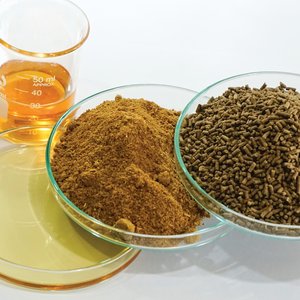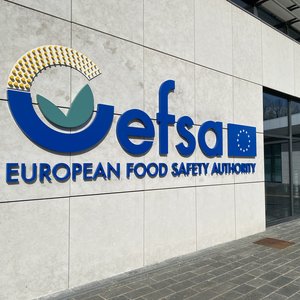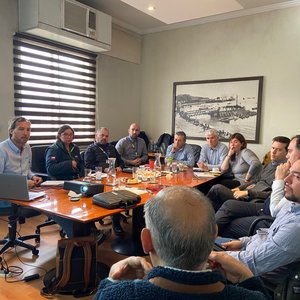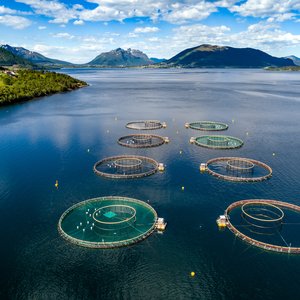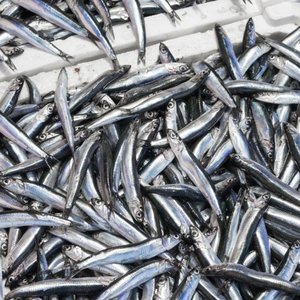U.S. Farm Bill passes with 318 bipartisan votes
Today, the U.S. House of Representatives approved the conference report for the Food, Conservation and Energy Act of 2008, better known as the Farm Bill. The new Farm Bill has the support of more than 550 farm, specialty crop, conservation, nutrition, consumer and religious organizations. The American Feed Industry Association (AFIA) said nearly all of its 2008 Farm Bill goals were achieved.
The 318 -106 vote for the five-year bill gave supporters 28 more than they need to override a threatened veto from President Bush. Agriculture Secretary Ed Schafer said: "For over a year, Congress has had the opportunity to work with the Administration to craft a farm bill that delivers reform to outdated, costly farm programs while strengthening the safety net and adhering to fiscal discipline in a time of nationwide economic challenge. Instead, Congress chose a different path, and today they passed a bloated, earmark laden bill that spends nearly $20 billion over its original cost and continues to balance subsidy payments to the wealthy on the backs of the middle class taxpayer.
"The bill passed today is a farm bill in name only. It does not target help for the farmers who really need it, and it increases the size and cost of government while jeopardizing the future of legitimate farm programs by damaging the credibility of farm bills in general. At a time of record setting income for farmers, it sends the wrong message to the rest of the country who are not experiencing the boom of the agriculture sector. This bill is loaded with taxpayer funded pet projects at a time when Americans are struggling to buy groceries and afford gas to get to work.
"Eight months behind schedule, Congress will send a bill to the President that is trade distorting and fails to provide meaningful reform to the adjusted gross income limit, beneficial interest or the international food aid program. However it is better late than never for the beneficiaries of the massive earmarks in this bill, like the $170 million for the salmon fishermen on the West Coast, or $500 million for a single entity land buy in Montana, just to name a few.
"Reckless spending like this is not what farm bills should be about. Congress had a real chance to implement reform and strengthen farm programs for the next decade. This reform could have allowed for savings to be reinvested in future agriculture needs, such as energy and research. Instead, they decided to spend billions upon billions of taxpayer dollars to grow government and invest in the tired status quo.
"The President will veto this bill, and I encourage Members of Congress on both sides of the aisle to support his stand for fiscal discipline and the best interests of America's farmers and ranchers."
In the latest issue of AFIA’s FeedGram newsletter, Steve Kopperud points out that the new livestock title includes USDA inspection for domestic and imported catfish; rewrites mandatory country-of-origin labeling (COOL) provisions of the 2002 Farm Bill and makes labeling mandatory as of September 30. Further COOL labeling allows for “Product of the USA” labels, as well as labels on fresh meat to indicate “Product of the USA and Canada/Mexico” for meat from animals born overseas but fed out and processed in the U.S.
GIPSA is required to file annual compliance reports on its competition oversight, but gone is a ban on packer ownership of livestock and mandatory arbitration for producers in production contracts with processors.
Any misbranded or adulterated product must be immediately reported to USDA under the new provisions, and all federally inspected establishments must develop and maintain a formal recall plan.
No anti-agriculture animal rights language was accepted by the conference, and the $3.5-billion permanent disaster program will be a direct payment program, recognizing the need to keep the commercial feed industry in the relief mechanism.
Important highlights of the Food, Conservation and Energy Act of 2008 (H.R. 2419)
• Invests $10.361 billion in nutrition programs, providing needed funding for food banks, improving and expanding access to the food stamp program by reforming benefit rules to cover rising food costs
• Devotes more than $1.3 billion in funding for organic agriculture, fruit and vegetable programs, and local food networks includes a new title dedicated to the needs of specialty crops and organic agriculture, including nutrition, research, pest management and trade promotion programs
• Extends and provides $7.9 billion of new funding for popular conservation programs, including the Environmental Quality Incentive Program, Farm Protection Program, Wetlands Reserve Program, and the Conservation Reserve Program
• Invests an additional $1 billion in renewable energy research, development and production encourages the transition from corn-based ethanol to cellulosic ethanol by reducing the tax credit for corn ethanol and increasing the credit for cellulosic ethanol production
• Reduces the income cap for farm program payments by 80%, preventing those with non-farm income above $500,000 from receiving any farm program payments and imposing a new income limit on farm income above $750,000 per year. It also requires direct attribution, closing loopholes that allow people to avoid payment limits by receiving money through multiple businesses
• Requires mandatory Country of Origin Labeling for fruit, vegetables and meat
• Rebalances loan rates and target prices among commodities, achieving greater regional equity.
• Offers farmers participating in commodity programs with a choice between the traditional price protection safety net and new, market-oriented revenue coverage payments.


